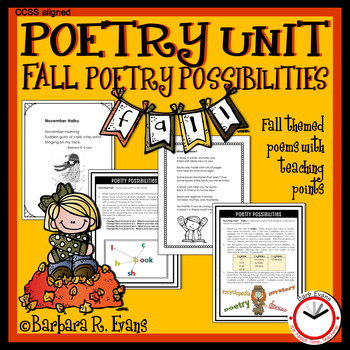I
read it.
I
write it.
I
teach it.
I love every kind of poetry from
nursery rhymes to sonnets, with one exception: Beowulf. Just couldn’t embrace that one back in high school.
Bringing
my love of poetry to the classroom is natural and no timeline or common
schedule will stop me from teaching with poetry. You see, you
can work on Common Core Standards while teaching with poetry. In fact, I believe poetry
can make many lessons easier than prose because…
- Poetry is fun. It’s fun to listen to and fun to read. Poetry with rhythm and rhyme is simply engaging for children.
- Poetry uses an economy of words. Thus, it looks different. When I was teaching Title I, my students really brightened up when I presented a poem rather than prose. While I have no empirical data to support this, I believe it was because that economy of words and the extended white spaces made the reading less intimidating.
- When teaching with rhymed poetry, the rhyme pattern makes the reading at least somewhat predictable. Young children crave and thrive on predictability.
- The structure of poetry makes it ever so much easier to teach concepts and skills. If, for example, you wanted to teach compound words, finding them in a poem is much easier than searching through a page of prose.
- Whether it’s because of the condensed message, or the engaging lilt of a poem, or both, I believe comprehension is easier for struggling or beginning readers.
Undoubtedly, I could extend this list of
reasons, but the purpose of this blog message is to describe how I use poetry
to teach. So, let me begin by saying that poetry appreciation is NOT my
primary focus.
When presented with enthusiasm, students will naturally come to appreciate
verse (unless, of course, it’s Beowulf!). That
said, I consider the anthologies we construct throughout the year to be a form
of poetry appreciation. My Title I students certainly prize their anthologies and routinely hound me for reassurance that they will, indeed, take their anthologies home
at the end of the year to keep forever.
STUDENT ANTHOLOGIES
 We
collect our poems in 3 ring binders,
aka anthologies.
The binders are stored on a bookshelf when we are not
actively using them. This keeps them from being gobbled up by the messy
desk gnomes and reduces the chaos in those desks. It also sends a subtle
message that poetry is special.
We
collect our poems in 3 ring binders,
aka anthologies.
The binders are stored on a bookshelf when we are not
actively using them. This keeps them from being gobbled up by the messy
desk gnomes and reduces the chaos in those desks. It also sends a subtle
message that poetry is special.
At least 1 poem per week is added to our anthologies. Frequently, we add more, or
at least some students do, as we use poetry in small group instruction. The pride with which they
fetch their anthologies convinces me that my students have a love for
poetry. Then again, it could be the thrill of using the 3 hole paper
punch to prepare them for the notebooks.
In
general, I photocopy the poems we put in the anthologies, rather than asking
the students to copy them in their own handwriting. This reflects a
respect for the timelines I am expected to follow. As a reading
specialist, I simply don’t have the time to ask my students to copy a
poem. Moreover, some kiddos can’t read their own writing.
In a
similar vein, much of the poetry has clip art on it. Again, this
expresses respect for teaching time. Nevertheless, students still want to
know when they can color the pictures. (That, BTW, is a great activity
when weather does not allow them to go out to play at lunch recess.) Some
poetry, however, is art free. There are poems that just demand to be
illustrated by the students. Those illustrations can tell me about the
accuracy of their comprehension.
Collecting
poetry in anthologies is just 1 component of poetry’s role in my
classroom. In my next post, I will describe using poetry in guided
reading groups.








No comments:
Post a Comment